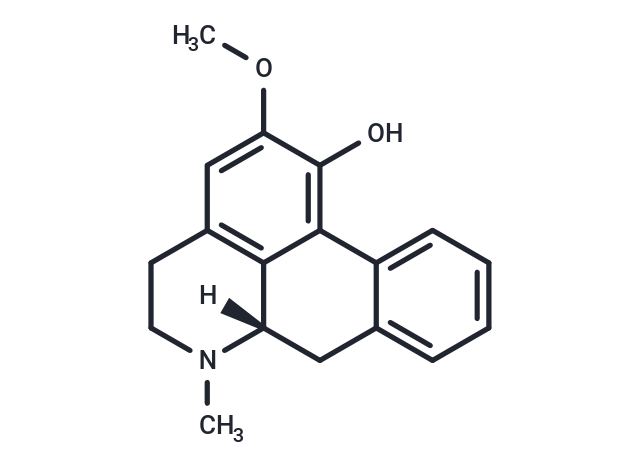Shopping Cart
- Remove All
 Your shopping cart is currently empty
Your shopping cart is currently empty

Lirinidine is an alkaloid isolated from L. tulipifera leaves with antioxidant and anticancer properties. It exhibits moderate iron-reducing capacity and small free radical scavenging capacity in vitro and can be used in cosmetic research.

| Pack Size | Price | Availability | Quantity |
|---|---|---|---|
| 1 mg | $72 | In Stock | |
| 5 mg | $168 | In Stock | |
| 10 mg | $250 | In Stock | |
| 25 mg | $418 | In Stock | |
| 50 mg | $623 | In Stock | |
| 1 mL x 10 mM (in DMSO) | $190 | In Stock |
| Description | Lirinidine is an alkaloid isolated from L. tulipifera leaves with antioxidant and anticancer properties. It exhibits moderate iron-reducing capacity and small free radical scavenging capacity in vitro and can be used in cosmetic research. |
| In vitro | Sixteen compounds were extracted and purified from the leaves of Liriodendron tulipifera. These compounds include aporphines, oxoaporphine, coumarin, sesquiterpene lactone, benzenoids, cyclitol and steroids. (+)-Norstephalagine (2) (an aporphine) and scopoletin (8) (a coumarin) were isolated from Liriodendron tulipifera leaves from the first time. The identified compounds were screened for their antiradical scavenging, metal chelating and ferric reducing power activities. The results have showed that these compounds have antioxidative activity. The study has also examined the chemopreventive property of the isolated compounds against human melanoma cells A375. The results showed that (-)-anonaine (1), (-)-liridinine (3), (+)-Lirinidine (6), lysicamine (7) and epitulipinolide diepoxide (9) significantly inhibited the proliferation of melanoma cells[1] |
| Molecular Weight | 281.35 |
| Formula | C18H19NO2 |
| Cas No. | 54383-28-7 |
| Smiles | [H][C@@]12Cc3ccccc3-c3c(O)c(OC)cc(CCN1C)c23 |
| Relative Density. | 1.216 g/cm3 (Predicted) |
| Storage | Powder: -20°C for 3 years | In solvent: -80°C for 1 year | Shipping with blue ice. | |||||||||||||||||||||||||||||||||||
| Solubility Information | DMSO: 55 mg/mL (195.49 mM), Sonication is recommended. | |||||||||||||||||||||||||||||||||||
Solution Preparation Table | ||||||||||||||||||||||||||||||||||||
DMSO
| ||||||||||||||||||||||||||||||||||||

Copyright © 2015-2025 TargetMol Chemicals Inc. All Rights Reserved.